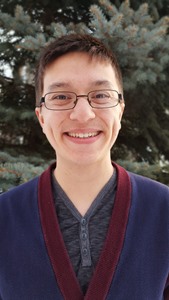Program Information
Gantry Speed Significantly Affects Image Quality and Imaging Dose for 4D Cone-Beam Computed Tomography On the Varian Edge Platform
A Santoso1*, K Song2 , S Gardner2 , I Chetty2 , N Wen2 , (1) Wayne State University School of Medicine, Detroit, MI, (2) Henry Ford Health System, Detroit, MI
Presentations
SU-E-J-28 (Sunday, July 12, 2015) 3:00 PM - 6:00 PM Room: Exhibit Hall
Purpose: 4D-CBCT facilitates assessment of tumor motion at treatment position. We investigated the effect of gantry speed on 4D-CBCT image quality and dose using the Varian Edge On-Board Imager (OBI).
Methods: A thoracic protocol was designed using a 125 kVp spectrum. Image quality parameters were obtained via 4D acquisition using a Catphan phantom with a gating system. A sinusoidal waveform was executed with a five second period and superior-inferior motion. 4D-CBCT scans were sorted into 4 and 10 phases. Image quality metrics included spatial resolution, contrast-to-noise ratio (CNR), uniformity index (UI), Hounsfield unit (HU) sensitivity, and RMS error (RMSE) of motion amplitude. Dosimetry was accomplished using Gafchromic XR-QA2 films within a CIRS Thorax phantom. This was placed on the gating phantom using the same motion waveform.
Results: High contrast resolution decreased linearly from 5.93 to 4.18 lp/cm, 6.54 to 4.18 lp/cm, and 5.19 to 3.91 lp/cm for averaged, 4 phase, and 10 phase 4D-CBCT volumes respectively as gantry speed increased from 1.0 to 6.0 degs/sec. CNRs decreased linearly from 4.80 to 1.82 as the gantry speed increased from 1.0 to 6.0 degs/sec, respectively. No significant variations in UIs, HU sensitivities, or RMSEs were observed with variable gantry speed. Ion chamber measurements compared to film yielded small percent differences in plastic water regions (0.1-9.6%), larger percent differences in lung equivalent regions (7.5-34.8%), and significantly larger percent differences in bone equivalent regions (119.1-137.3%). Ion chamber measurements decreased from 17.29 to 2.89 cGy with increasing gantry speed from 1.0 to 6.0 degs/sec.
Conclusion: Maintaining technique factors while changing gantry speed changes the number of projections used for reconstruction. Increasing the number of projections by decreasing gantry speed decreases noise, however, dose is increased. The future of 4D-CBCT’s clinical utility relies on further investigation of image optimization.
Contact Email:


